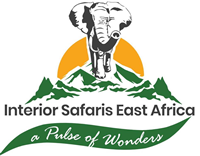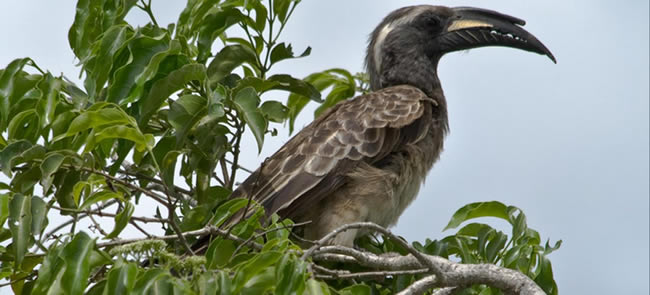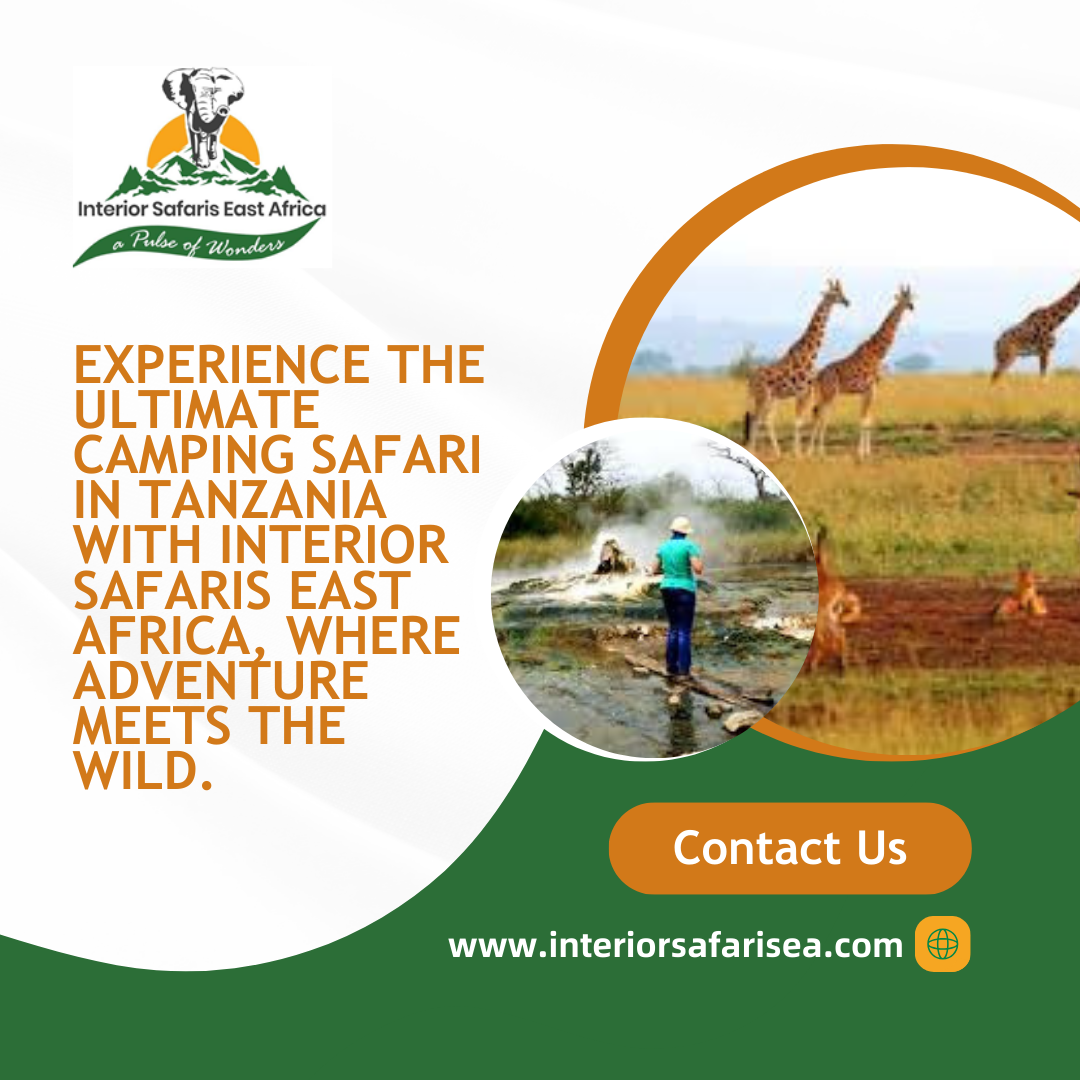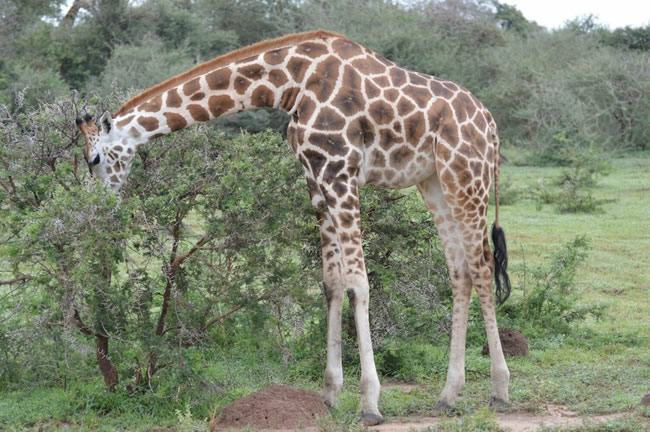
Is among Uganda’s smallest national parks as it covers an area of 260 sq kilometers all lying between 1,220 meters to 1,828 meters above sea level. The park contains 5 lakes and the most important of these is Lake Mburo where the park derives its name and the largest of five lakes.
A big portion of Lake Mburo National Park consists of open savanna and acacia wooded savannas, with some of the more common trees being acacia gerrardii, acacia hockii, acacia sieberiana and acacia polycantha. In the western part of the park, the savanna is interspersed with rocky ridges and forested gorges, while patches of papyrus swamp and narrow bands of lush riparian woodland line the verges of the various lakes making it suitable for a variety of game viewing existent in the southern hemisphere on Uganda, thus rendering Mburo a must stopover for most tourists mostly from and to mountain gorilla tracking.
Small as it is, Mburo is the only park in Uganda to support a population of impala, the handsome antelope for which Kampala the capital of Uganda is named, and one of only three protected areas countrywide where Burchel’s zebra occurs, the other two being the far less accessible Kidepo and the Pian-Upe game reserve always looked at as a migration corridor for wildlife. Other antelope species likely to be seen by casual visitors are topi, Mburo is the best park to see bushbuck roaming freely and not in hiding a usual character that invoked its naming, Defassa waterbuck, common duiker, Oribi, and bohor reedbuck, while the lake and lush fringing vegetation support healthy populations of buffalo, warthog, bushpig and hippopotamus. Roan antelope, once common, are now locally extinct and no sighting of late, but large herds of the majestic eland still move seasonally through parts of the park. The shy and webbed sitatunga antelope is confined to park interiors, and the klipspringer is occasionally observed in rocky areas. Only two diurnal primates occur at Lake Mburo: the velvet monkey and olive baboon. The beerie rising nocturnal call of the spotted hyena is often heard from the camps, and individuals are less frequently observed crossing the road shortly after dawn. Leopard, side-stripped jackal and various smaller predators are also present, most visibly white-tailed mongoose (at dusk and dawn) and three other species resident in the lake. The lions for which Lake Mburo was famed in the 1960s were hunted to local extinction by the late 1970s and their present status is uncertain, only a few roars are heard than seeing these great predator, a few occasional visits from Akagera National Park in Rwanda is attributed to the few recent sightings
Lake Mburo national park has about 315 spp of birds. It’s probably the best place in Uganda to see acacia associated birds, and Rwonyo camp is as good a place as any to look for the likes of mosque and Red Chested swallow, black-bellied bustard, bare-faced go-away bird, Brown Parrot, Red Headed Lovebird and many more. A handful of birds recorded in Lake Mburo are essentially southern species at the very northern limit of their range, for instance the southern ground hornbill, black-collared and black-throated barbets, green-caped Eremomera Red Faced Barbet, Tabora Cisticola, Coqui Francolin and the best spot for the African Finfoot almost in the whole world, makes it a great starting or ending point for any Uganda Birding Trip
Of special interest to birders are the swamps, in which six papyrus endemics are resident, including the brilliantly colored papyrus gonolek a globally threatened bird spp, the striking blue-headed coucal, and the highly localized white winged and papyrus yellow warblers, the last recorded nowhere else in Uganda. In a nutshell, this is among the parks that Uganda has to offer and just come with Journeys Uganda and we take you listen to the whispers of the Wild!!
While in Lake Mburo visitors can take part in a number of activities ranging from the popular game drives, boat ride, and nature walks
Nature walks can be done on foot, with the help and guidance of an experienced guide who will explain the flora and fauna of the park. The walk also explores the park around rwonyo and culminates in a visit to a natural salt lick frequented by many animals, the viewing is facilitated by a timber observation platform.
Game drives the eastern hinterland of Lake Mburo is served by a network of game tracks along which a variety of savannah animals and birds can be sighted. Impalas are the most commonly seen along the impala track while zebras frequent the grassy valley floors traversed by the zebra track. This connects to ruroko track which passes rock kopies, home to the elusive klipspringer. The south of the park, the lakeside track passes through dense woodland that is home to bushbuck and bush duiker, to kigarama hill which provides a panoramic view of Lake Mburo. This lake and seven more can also be seen from kazua lookout close to the kazuma track.
The boat is yet another interesting activity on Lake Mburo where visitors get an up-close with a variety of wildlife such as crocodiles, hippos and birds like the African fish eagle, fin foot, water cormorants. The eastern shores of the Lake can be explored by the boat departing from a jetty lakeside campsite near rwonyo
Horse riding is commonly done by mihingo lodge inside the park while quad bike riding are also conducted by the All-terrain vehicle it gives a spectacular experience of the park ‘s terrain and wildlife with and up-close encounter with numerous animals without a scare.
Though small the tracts of rubanga forest on the western side of Lake Mburo provides a taste of the tropical forest with closed canopy and is home to a variety of forest birds making it perfect for birding.
3 Days Tour Lake Mburo National Park
Day 1: Arrive in Lake Mburo National Park
After your breakfast, drive to Lake Mburo National Park, – one of the newest wildlife National Parks in Uganda. once there, you will go for a game drive in the afternoon on which you will encounter various animals such as impalas, oribis, zebras, elands, buffaloes and topis among several others. Dine and spend the night at Mantana Tented Camp or Rwonyo Rest Camp
Day 2: Game drives and a boat trip
You will go for a game drive in the early morning to see the early risers retiure from their hunt. Later, in the day, you will head back to the lodge to enjoy a late breakfast and rest. After lunch, go for the thrilling boat trip on which you will see various water birds like the strange White winged Warbler, the Papyrus gonoleks, Bare-faced Go-away bird, Brown-faced lapwing and Carruther’s cisticolas. Have dine and sleep at Rwonyo Rest Camp or Mantana Tented Camp
Day 3: Return to Kampala
Have an early breakfast and then begin the drive back to Kampala
The Safari Package Covers:
- Necessary Government Taxes
- Park Entrance Fees
- Game Drives
- A 2 Hour Launch Cruise on the Kazinga Channel
- Chimpanzee trekking
- Park Ranger Fees
- Ground Transportation by in a 4WD safari vehicle
- Full Board Accommodation (two nights) and meals along the way as per your itinerary
- Airport transfer, if your flight is on the very day as the safari is ending
- Full time English speaking Driver-Guide
Safari Exclusions:
- Personal Insurance
- Airfares
- Visa Fees
- Personal Expenses such as; cigarettes, drinks, telephone, tips, laundry plus meals not stated in the itinerary plus activities stated as optional.



